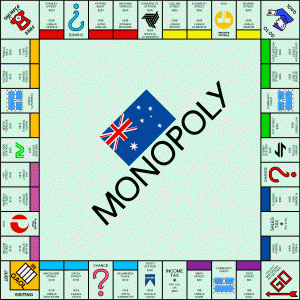Cross posted with permission from Capital Appreciation, an excellent and informative resource on ACT/Queanbeyan housing markets. View his latest post here on the trouble finding any house below $300,000 in the nations capital.

Canberra property buyers, sellers and real estate agents have been obsessed with unimproved land values for many years. Canberra seems to leave all other Australian capital cities for dead in terms of interest in the unimproved land value. The land value is pasted all over every ACT allhomes listing and real estate flyer, and is a key statistic used by real estate agents to talk up the price of properties. Allhomes even has a page dedicated to unimproved land value bargains, although you could consider it a bit of an oxymoron as Canberra doesn’t have any land value bargains. I’m sure the obsession with unimproved land values in the ACT has played a role, albeit minor, in helping drive property prices higher over the last decade.
This recent Sydney Morning Herald article on successful court challenges of Sydney land valuation caught my eye. Many Sydney landowners have successfully challenged their unimproved land values in court resulting in significant reductions in land valuations. Such reductions in unimproved land values can provide benefits such as reduced land tax and rates, and especially for those owners of expensive multi-million dollar property or land.
I am not sure how many people in the ACT typically challenge their land valuation but it did make me wonder how frequently it occurs given the mystery surrounding land valuation. After all there is no magic land valuation formula published and it is “not an exact science”. According to the ACT Revenue Office,
The unimproved land value of each block is assessed by examining the sales evidence of similar properties. Where possible, the sale price of unimproved land in the area is used as a comparison, with adjustments made for any individual difference such as size, location, aspect and view which may affect the value of each block of land.
Where there have been no sales of vacant land in the area, or in comparable areas, the valuer works from the sales of improved properties, and deducts amounts for improvements such as buildings, landscaping, paths, fences and the like, in order to deduce an unimproved land value of the sale blocks. These values are then used to assess the unimproved land value of other blocks.
While the valuation method above makes sense, it’s not without its problems. The current number 1 property on the allhomes unimproved land value list, 71 Captain Cook Crescent Griffith, illustrates a common occurring problem with ACT land valuations. The unimproved value for the 1039.5 square metre block of 71 Captain Cook Crescent is $829,000. However, its neighbour, 73 Captain Cook Crescent has a lower unimproved land value of $816,000 but the block of land is significantly larger at 1315 square metres. There are no other notable differences in the two blocks of land and the two properties are of similar age and quality. Surely it can’t be that hard to have a land valuation system or methodology that values a larger block of land higher than a neighbouring smaller block?
These kinds of valuation discrepancies are by no means rare in the ACT so please let me know of any other bizarre land valuations you’ve seen around Canberra or any suggested improvements to the land valuation process.